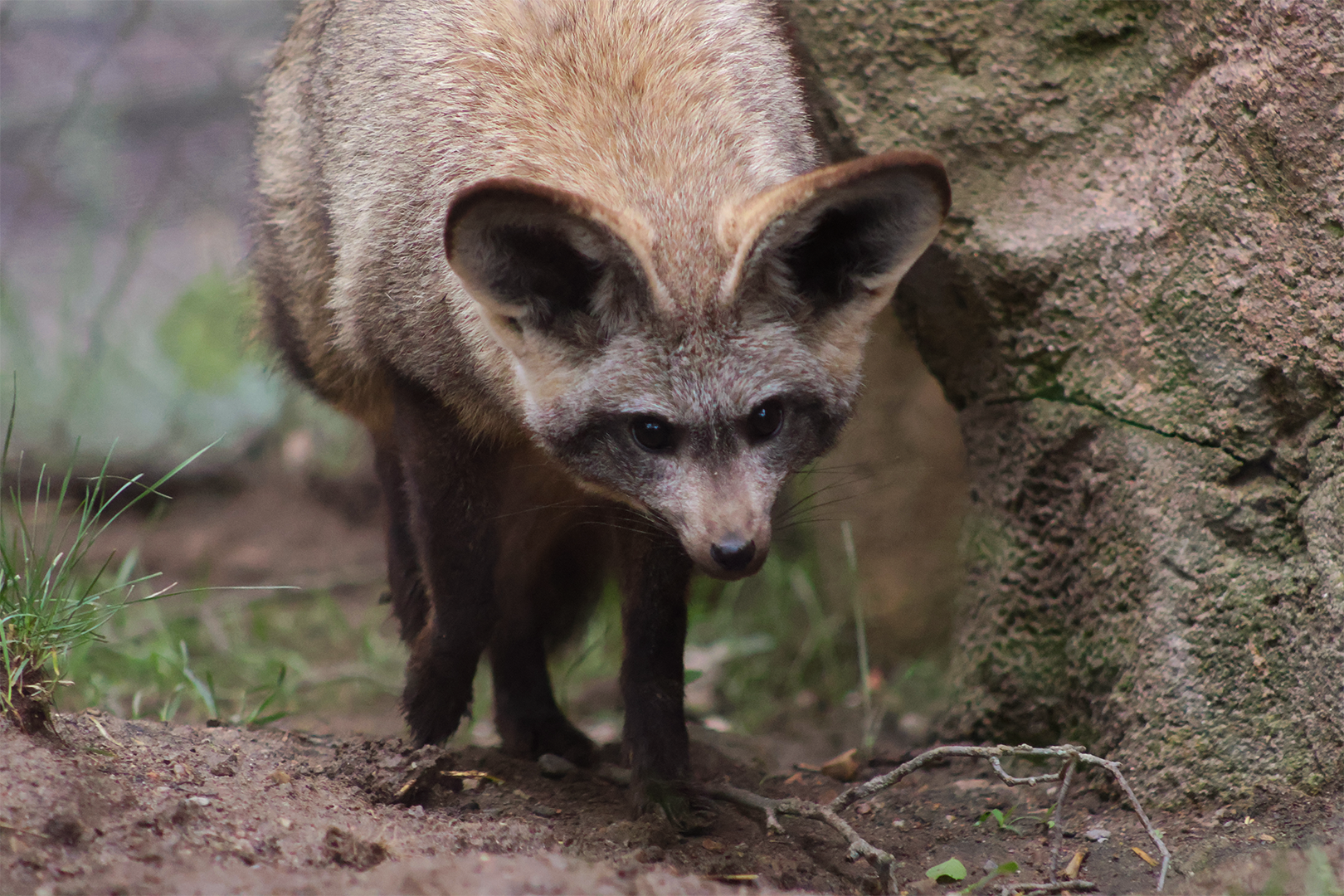Bat-eared foxes play an important role in termite control. A single bat-eared fox can eat approximately 1.15 million termites each year.
I LIVE IN AFRICA
The bat-eared fox lives in eastern and southern Africa, primarily in savannas, brush, and grasslands.
I AM AN INSECTIVORE
The fox’s diet largely consists of insects, specifically termites and dung beetles, and this fox species has specialized molars useful for chewing the tough insects they feast on.
BAT-EARED FOXES ARE SOCIAL
Bat-eared foxes can be found living in groups of mating pairs and their young. They are a very social species and spend lots of time grooming each other, as well as playing and sleeping together.
THE BETTER TO HEAR YOU WITH, MY DEAR!
The bat-eared fox’s large ears, measuring over five inches long, help them hear insects moving underground. Bat-eared foxes can even hear larvae chewing their way out of buried dung beetle ball! They can also detect the sound of harvesting termites chewing on short grasses.
HELPING THE BAT-EARED FOX IN THE WILD
The bat-eared foxes at the Fort Wayne Children’s Zoo are enrolled in the Species Survival Plan (SSP). SSP is a program implemented by the Association of Zoos and Aquariums (AZA) to help ensure a genetically viable population exists.

